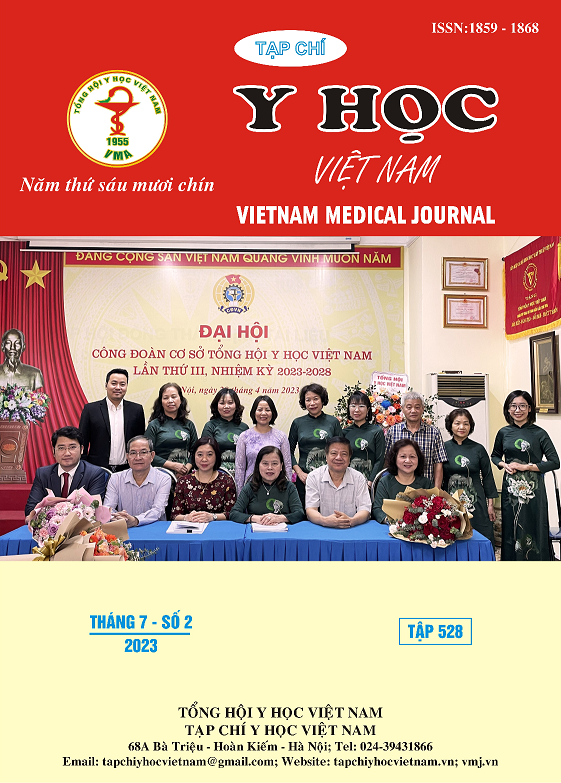SEALING ABILITY OF SINGLE-CONE OBTURATION TECHNIQUE: AN INVITRO STUDY
Main Article Content
Abstract
Objectives: The aim of this study is to compare voids in single-cone obturation technique among the 1/3 coronal, 1/3 middle and 1/3 apical of tooth. Research methods: In vitro, fifteen extracted maxillary central incisors were rinsed under running water for 1 minute and disinfected by immersing in Hexanios solution 2% for at least 2 hours, then being presereved in Formalin 10%. The root canals were shaped using the ProTaper hand file system with Crown-down technique. Roots were obturated with a single F3 gutta-pecha cone with AH26 sealer. Evaluation the void of the obturation at the 1/3 coronal, 1/3 middle and 1/3 apical. Results: Filling root canal by single cone obturation technique had 3 teeth (20%) with no voids, the average void percentage is 1.49±1.35%. 1/3 coronal of the tooth had the highest void percentage of all referenced positions (8.61%). The void percentage of spacing area at 1/3 coronal is more than that of 1/3 apical, the difference is a statistically significant (p < 0.05) according to Wilcoxon test. Conclusions: In single-cone root canal obturation technique, the sealing ability decreased gradually from 1/3 coronal to 1/3 apical (median of void percentage at 1/3 coronal: 1.68%, 1/3 middle: 0.41%, 1/3 apical: 0%). Using the single cone technology to obturate the root canal in the 1/3 apical achieve the optimal sealing effect.
Article Details
Keywords
root canal obturation, single cone, Protaper, AH26.
References
2. Antonopoulos KG, Asavanop P, Tay WM (2001), “Evaluation of the apicalseal of root canal fillings with different methods”, J Endod, pp.655-658.
3. Clauder T, Baumann MA (2004), “Protaper NT system”, Dent Clin North Am, 48(1), pp.87-111.
4. ElAyouti A et al (2005), “Homogeneity and Adaptation of a New Gutta-Percha Paste to Root canal walls”, J Endo, 31(9), pp.697-90
5. Godon MP, Love RM, Chandler NP (2005), “An evaluation of .06 tapered gutta-percha cones for filling of .06 taper prepared curved root canal”, Int Endod J, 38(2), pp.87-96.
6. Heran, J, Khalid, S, Albaaj, F, Tomson, PL & Camilleri, J (2019) The single cone obturation technique with a modifiedwarm filler, Journal of Dentistry, 103181, ISSN 0300-5712.
7. Inan U, Aydin C, Tunca YM, Basak F (2009), “In vitro evaluation of matched – taper sigle – cone obturation with a fluuid filtration method”, J Can Dent Assoc, 75(2), pp.123.
8. Kim. S, , Park J.W., Jung I.Y., Shin S.J. (2017). Comparison of the percentage of voids in the canal filling of a calcium silicate-based sealer and gutta percha cones using two obturation techniques. Materials (Basel). 10.
9. Kocak MM, Yaman SD (2009), “Comparison of apical and coronal sealing in canals having tapered cones prepared with a rotary NiTi system and stainless steel instruments”, J Oral Sci, 51(1), pp.103-107.
10. Marchiano MA et al (2010), “Analysis of four gutta-percha techniques used to fill mesial root canals of mandibular molars”, International Endodontics Journal, pp.1365-2591.


